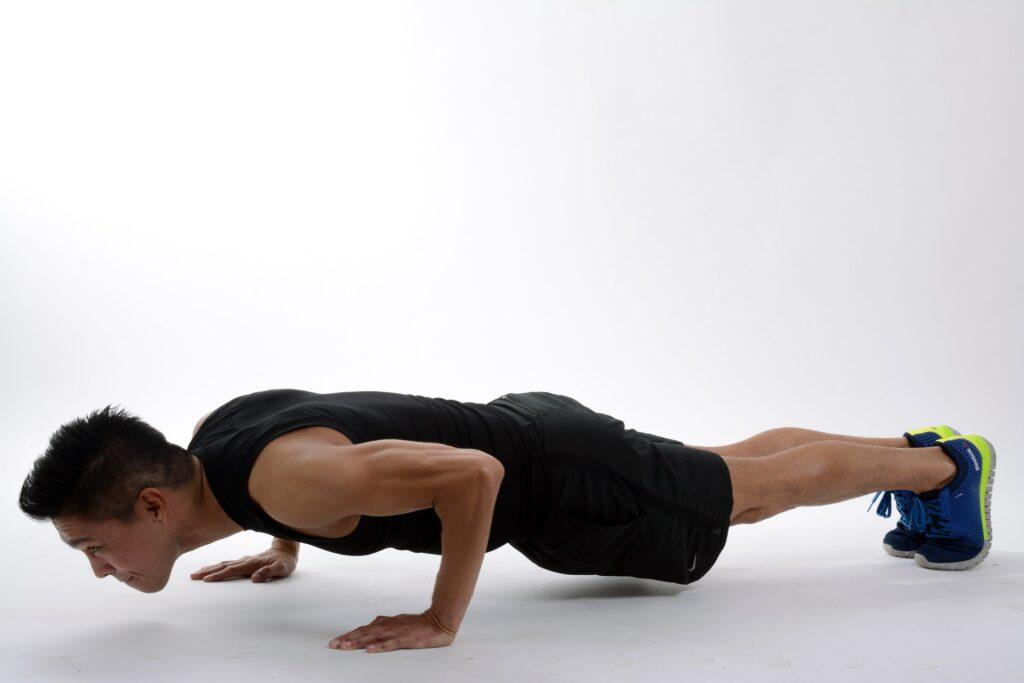Anaerobic fitness training is considered the strength component of the fitness, which also involves two other essential parts: aerobic fitness (the part of cardio-vascular resistance) and joint mobility. Speed and skill are native qualities that are not very relevant for the health and fitness state where the main focus is mass fitness.

Anaerobic exercise regimens are primarily designed to build a force, fortify the body, or increase muscle mass. There are times when only strengthening the muscles is intended. The typical example for these situations is given by the sports organized in categories, in which physical force (with the interdiction of going over a certain limit of weight) is tested. The growth of muscular mass determines the increase of strength and fortifying of the skeletal muscles. In this case, the fitness programs are very similar to bodybuilding, without being followed by any dangerous changes, specific to bodybuilding.

Anaerobic fitness is to develop all the muscles consistently, harmoniously, and in balance without sacrificing their functionality. This last idea is important for making a clear difference between fitness and the tendencies, many times narcissistic, manifested by bodybuilding practitioners. The sportsman who takes up fitness wants to be able to and can do something with his muscles, more than showing them in contests or different other occasions and places (discos, swimming pools, clubs, etc.).
One of the important characteristics of anaerobic fitness training is the use of general programs, during which all or almost all the muscles are worked out in one training session. In bodybuilding, the programs are divided and training is focused every time on one, two, or at most three groups of muscles; while in fitness one training can be concentrated on a certain area. It does not exclude the other muscles, which will benefit, directly or indirectly from one exercise for each group of muscles.
By keeping the fitness programs to an average length of one hour and fifteen minutes, the catabolic faze—which typically occurs during lengthy training sessions—is avoided (two hours or even more).
Another modality of reducing the time of training is doing a super-series whose object is to train two antagonistic groups of muscles (chest and back or biceps and triceps, etc.). Therefore, each group of muscles must be performed a series of exercises, without a break in between; the break is taken only at the end of this double effort. The programs can also contain triple series or even giant series (more than three exercises one after the other). The intensity of the training can be significantly increased to train many muscles in a short time.
The weekly frequency of the training remains the same (three sessions); so the aerobic phase can be covered in the free days. If only three or even two sessions per week are feasible, mixed programs can be used. These programs add 15-20 minutes of aerobic fitness to the session following the always-performed anaerobic fitness to balance the two phases (anaerobic and aerobic). Training must go no longer than an hour and a half in this situation as well, or otherwise the catabolic phase—during which muscles “self-cannibalize”—will begin.

For all somatic types, anaerobic fitness is advised, with unique variations in training methods. In the cases of ectomorphic and mesomorphic types, all the series (3 or 4) performed on the same machine must be finished, and then the machine and the group of muscles which is trained must be changed at the same time. This system is also called ‘workshop training’.
The endomorphic type (the overweight) is best served by circuit training, in which the muscles being worked on are switched after each series and the entire circuit is repeated three or four times. Because there are no rest periods between series and the heart frequency is slightly raised, this sort of exercise burns more calories.